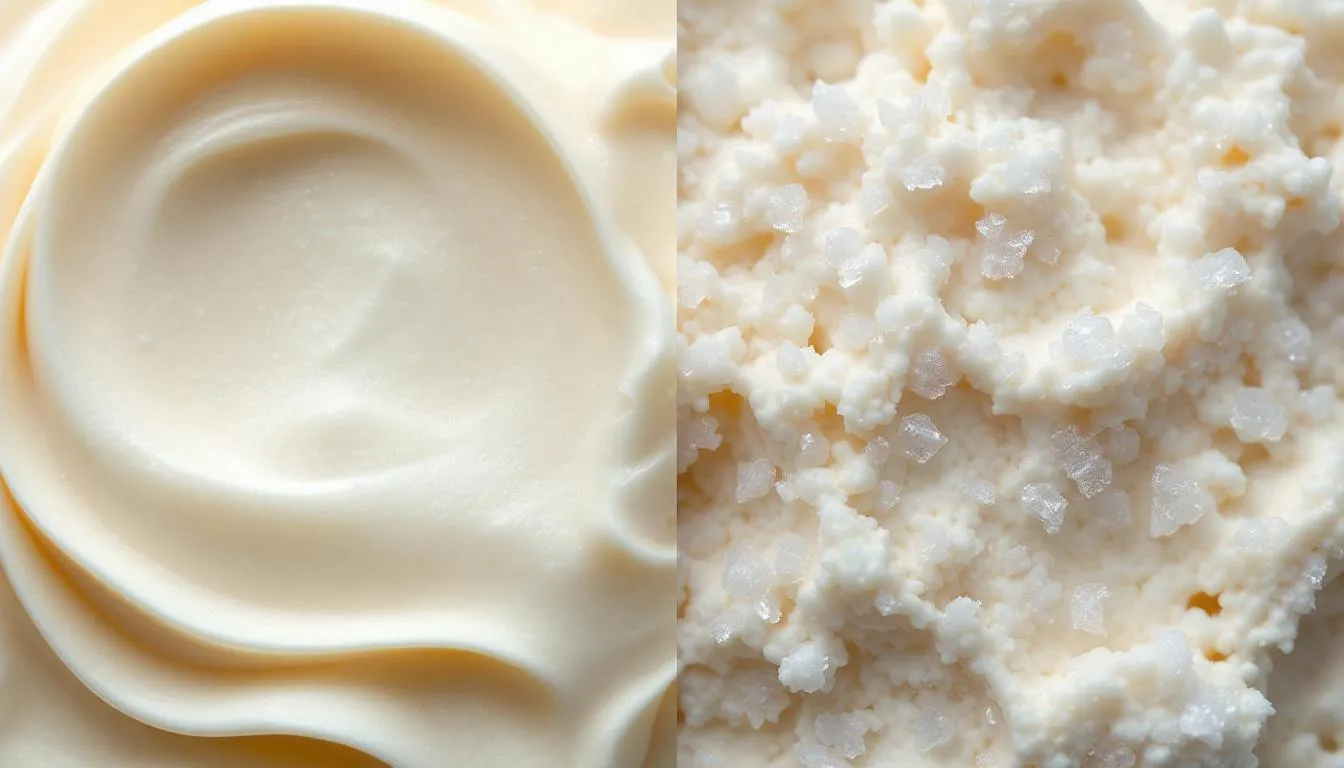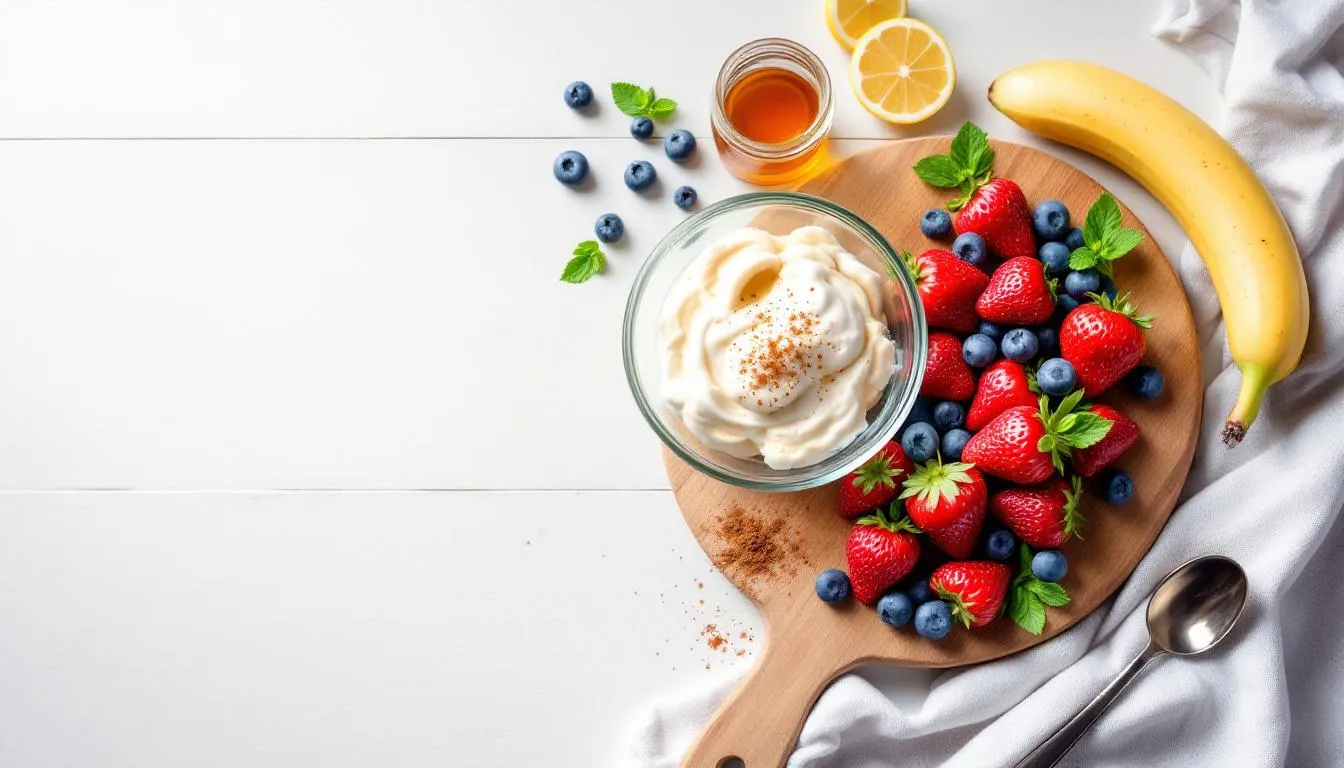

The Ultimate Guide to Delicious Low Calorie Ice Cream Options
Low Calorie Ice Cream: The Complete Guide to Healthier Frozen Treats
The low calorie ice cream market has exploded from $1.2 billion in 2018 to over $2.8 billion in 2023, and for good reason. We've all been there – standing in the freezer aisle, torn between wanting delicious ice cream and maintaining our health goals. The good news? You no longer have to choose between taste and nutrition.
As the team behind California Ice Protein, we've experienced firsthand the frustration of trying countless low calorie ice creams that promised the world but delivered icy, artificial-tasting disappointments. That's exactly why we set out to create something different – a product that proves you can have your ice cream and eat it too, without compromising on either taste or nutritional value.
In this comprehensive guide, we'll walk you through everything you need to know about low calorie ice cream, from understanding what makes a quality product to reviewing the top brands available today. Whether you're a fitness enthusiast looking for high protein options or simply someone with a sweet tooth who wants fewer calories, this guide will help you navigate the growing world of healthier frozen treats.
What Is Low Calorie Ice Cream?
Low calorie ice cream refers to frozen desserts that contain 200 calories or less per 2/3 cup serving – significantly lower than regular ice cream, which typically packs 250-400 calories in the same serving size. These products achieve their reduced calorie count through several innovative approaches: using reduced-fat or dairy free alternatives, incorporating artificial sweeteners or sugar alcohols instead of traditional sugar, and often adding protein to create a more satisfying treat.
The magic happens through careful formulation. Manufacturers replace heavy cream with lighter alternatives like coconut milk or greek yogurt, swap out added sugar for natural sweeteners like stevia, and often boost the protein in ice cream to maintain that satisfying, creamy texture we all crave. Some brands achieve half the fat content of traditional ice cream while maintaining an indulgent taste experience.
One of the biggest misconceptions about low calorie ice cream is that it automatically means sacrificing taste and texture. While this was true for early iterations of diet ice creams, today's options have come a long way. The best low cal ice cream options now deliver on both fronts – fewer calories without the compromise.
The market explosion reflects a broader shift in consumer preferences. People want their desserts to align with their health goals, whether that's weight management, increased protein intake, or simply reducing their sugar consumption. This demand has pushed innovation forward, resulting in products that would have seemed impossible just a decade ago.
Why Most Low Calorie Ice Creams Miss the Mark
Despite the impressive market growth, the reality is that most low calorie ice creams still fall short of delivering a truly satisfying experience. We discovered this through our own extensive taste test journey before developing our product line.
The most common problem is texture. Many brands rely heavily on sugar alcohols like erythritol and xylitol to achieve sweetness without calories, but these ingredients often create an icy, almost crystalline texture that's nothing like real ice cream. When you take a spoonful, instead of that smooth, creamy experience, you get something that feels more like flavored ice chips.
Artificial sweeteners present another challenge. While they reduce calories, many create distinct aftertastes that remind you constantly that you're eating a "diet" product. The chocolate flavor might taste right initially, but the lingering stevia or sucralose aftertaste ruins the experience. We've all had that moment where we thought, "This almost tastes like the real thing… almost."

Then there's the protein versus taste compromise. Many high protein ice creams contain 15-20 grams of protein per serving, which sounds fantastic for fitness goals. However, achieving these protein levels often results in a chalky, dense texture that's more reminiscent of frozen protein powder than delicious ice cream. The vanilla varieties are particularly notorious for this issue.
We experienced this frustration firsthand during our product development. Our early prototypes either tasted great but lacked nutritional value, or hit our protein targets but sacrificed the creamy, indulgent experience that makes ice cream special. It took months of reformulation to find the sweet spot where nutrition and taste coexist harmoniously.
The ingredient lists tell the story. Many products contain 15-20 ingredients, including multiple types of gums, stabilizers, and artificial flavoring compounds. While these aren't necessarily harmful, they often signal that the manufacturer is trying to engineer their way around fundamental formulation challenges rather than solving them naturally.
Ready to Experience Real Taste Without Compromise?
Try California Ice Protein bars and taste the difference. Use code BLOG15 for 15% off your first order.
Shop Now & Save 15%What to Look for in Quality Low Calorie Ice Cream
When shopping for low calorie ice cream, prioritize creamy texture over just hitting the lowest possible calorie count. The sweet spot is typically 80-150 calories per serving – low enough to fit your goals but high enough to allow for quality ingredients that deliver on taste and texture.
Natural sweeteners make a significant difference in both immediate taste and aftertaste. Look for products sweetened with monk fruit, small amounts of cane sugar, or natural fruit sugars rather than those relying heavily on sugar alcohols. While some sugar alcohols are fine in moderation, products where they're the primary sweetener often suffer in the texture department.
Protein content is crucial for both satiety and nutritional value. Aim for products with 8-15 grams of protein per serving. This range provides enough protein to help you feel satisfied without requiring so much that it compromises texture. Higher protein content also helps stabilize blood sugar and keeps you feeling full longer than traditional ice cream would.

The ingredient list should be relatively short and recognizable. Quality low calorie ice cream shouldn't require more than 10 ingredients to achieve great taste and nutrition. If you can't pronounce half the ingredients or if there are multiple types of artificial additives, that's usually a red flag.
Pay attention to fat content as well. While you want fewer calories, products with zero fat often sacrifice too much in terms of mouthfeel and satisfaction. Look for options that have reduced fat rather than eliminated it entirely – typically 2-6 grams per serving strikes the right balance.
Consider the serving size listed on the nutrition label. Some brands make their products appear lower in calories by using unrealistically small serving sizes. A proper serving should be around 2/3 cup (about 100ml), which is what most people actually eat in one sitting.
Finally, check the carbs and added sugar content. Quality options typically contain 15-25 grams of total carbs per serving, with minimal added sugar. Products that are very high in carbs but claim to be low calorie are often using sugar alcohols that can cause digestive discomfort for some people.
Top Low Calorie Ice Cream Brands in 2024
California Ice Protein - The Game Changer
We've spent years perfecting our formula to solve the fundamental taste versus nutrition compromise that plagues this industry. Our ice cream delivers 110 calories and 12 grams of protein per serving while maintaining the creamy, indulgent texture you expect from premium ice cream.
What sets us apart is our unique protein blend that actually enhances rather than detracts from the ice cream experience. Instead of using cheap protein powders that create chalkiness, we've developed a proprietary combination that integrates seamlessly into our base, creating a naturally thick and satisfying texture.
Our ingredient list stays clean and simple. We use real milk, natural flavors, and a carefully balanced sweetener blend that eliminates the artificial aftertaste common in other brands. The result is an ice cream bar experience that consistently surprises customers who expect compromises but find none.
Customer testimonials consistently highlight how our products taste compared to regular ice cream. "I literally can't tell the difference" and "finally, a protein ice cream that doesn't taste like protein" are comments we hear regularly. This isn't marketing hype – it's the result of refusing to accept the industry standard that healthy ice cream has to taste healthy.
Halo Top - The Pioneer
Halo Top deserves credit for pioneering the low calorie ice cream category and proving there was market demand for healthier frozen desserts. Their vanilla bean flavor contains 100 calories per serving with 7 grams of sugar, making it a reasonable option for those watching their intake.
The texture is notably light and fluffy rather than dense and creamy. While some enjoy this characteristic, others find it slightly icy compared to traditional ice cream. The flavor itself is authentic vanilla, though you'll notice it's not quite as rich as full-fat versions.
Halo Top typically retails for around $5.99 per pint at most grocery stores, making it one of the more affordable options in the category. The brand offers an extensive flavor selection, from classic chocolate to more adventurous options like peanut butter cup.
One consideration with Halo Top is that it's best enjoyed when slightly softened. Eating it straight from the freezer can accentuate the icy texture, but letting it sit for 5-10 minutes improves the experience significantly.
Nick's Swedish Style
Nick's brings European sensibilities to the low calorie ice cream market, and their peanut butter cup flavor showcases this approach well. At 90 calories per serving, it falls into our ideal range while delivering authentic peanut butter taste.
The texture is notably different from American-style ice creams – slightly chewy due to their use of sugar alcohols, but in a way that feels intentional rather than accidental. It's reminiscent of premium gelato in terms of density and mouthfeel.
Flavor-wise, Nick's delivers impressive authenticity. The peanut butter taste is rich and nutty without being overly sweet, and the chocolate chips add pleasant texture contrast. However, like Halo Top, it benefits from a few minutes of softening before serving.
Pricing typically runs $5-6 per pint in most markets, positioning it competitively within the premium low calorie segment. The brand's Swedish heritage shows in their attention to ingredients and overall product philosophy.
Enlightened and Yasso Alternatives
Enlightened offers a different approach with their ice cream bars, typically containing 80-100 calories each. These work well as portion-controlled treats and often feature interesting flavor combinations that you won't find in traditional ice cream.
Yasso takes the frozen yogurt route with their bars, using a greek yogurt base that naturally provides protein while keeping calories reasonable. The texture is distinctly different from ice cream – tangier and less creamy – but many appreciate this as a refreshing alternative rather than a compromise.

Both brands offer decent options but don't quite reach the premium taste standards of the top-tier products. They're worth trying if you're looking for variety or if their particular approach to texture and flavor appeals to your preferences.
The bar format has advantages for portion control and convenience, making these good options for people who struggle with eating appropriate serving sizes when dealing with pints. However, the experience feels more like a snack than a dessert, which may or may not align with what you're seeking.
How to Choose the Right Low Calorie Ice Cream for You
Your dietary preferences and restrictions should guide your selection process. If you're dairy free, focus on coconut milk or other plant-based options, though be prepared for different texture characteristics. Keto dieters should prioritize products with minimal carbs and higher fat content, exploring options from top keto ice cream brands, while those focused on high protein goals should target the 12-15 gram range per serving.
Texture preferences vary significantly among individuals. Some prefer the light, airy feel of Halo Top-style products, while others want the dense, creamy experience closer to traditional ice cream. The only way to know your preference is to try different approaches and see what satisfies you most.
Price per serving varies considerably across brands and often doesn't correlate directly with quality. Calculate the cost per serving rather than per pint, as serving sizes differ between brands. Most quality options fall between $0.75 and $2.00 per serving, with premium brands commanding higher prices for better ingredients and taste.
Consider your typical consumption patterns. If you tend to eat ice cream as an after-dinner dessert, look for options with enough richness and satisfaction to feel like a proper treat. If you're using ice cream as a post-workout snack, prioritize protein content and ingredients that support recovery.

Read ingredient lists carefully to avoid personal trigger ingredients or allergens. Many low calorie ice creams contain tree nuts, soy, or sugar alcohols that can cause digestive issues for sensitive individuals. Don't assume that "natural" automatically means suitable for your specific dietary needs.
Test different brands and flavors systematically rather than making judgments based on single experiences. Keep notes on what you like and dislike about each option – this will help you identify patterns in your preferences and make better choices going forward.
Homemade Low Calorie Ice Cream Recipes
Protein-Packed Strawberry Nice Cream
This delicious ice cream recipe combines the natural sweetness of strawberries with protein powder for a treat that's both satisfying and nutritious, delivering just 95 calories per serving with 12 grams of protein.
Ingredients:
-
2 frozen bananas, sliced
-
1 cup frozen strawberries
-
1 scoop vanilla protein powder
-
2 tablespoons unsweetened almond milk
-
1 teaspoon vanilla extract
-
Optional: stevia to taste
Instructions:
-
Let frozen fruit soften for 5 minutes at room temperature for easier blending
-
Add bananas and strawberries to a high-powered blender or food processor
-
Blend until the fruit begins to break down, scraping sides as needed
-
Add protein powder, almond milk, and vanilla extract
-
Blend until completely smooth and creamy, about 2-3 minutes
-
Taste and add stevia if additional sweetness is desired
-
Serve immediately for soft-serve texture, or freeze for 30 minutes for firmer consistency
The key to avoiding ice crystals is thorough blending and not adding too much liquid. The bananas provide natural creaminess while the strawberries add vibrant flavor and color. This recipe works with fresh strawberries too, though you may need to freeze the final mixture longer for proper consistency.
Coffee Cottage Cheese Ice Cream
This high protein recipe uses cottage cheese as the base for an incredibly creamy texture that rivals traditional ice cream, with 18 grams of protein per serving and only 120 calories.
Ingredients:
-
1 cup low-fat cottage cheese
-
2 tablespoons instant coffee or espresso powder
-
3 tablespoons monk fruit sweetener or stevia
-
1/4 cup unsweetened almond milk
-
1 teaspoon vanilla extract
-
Pinch of salt
-
Optional: 2 tablespoons mini chocolate chips
Instructions:
-
Blend cottage cheese in a food processor until completely smooth, about 3-4 minutes
-
Add instant coffee, sweetener, almond milk, vanilla, and salt
-
Process until thoroughly combined and no lumps remain
-
Pour mixture into a freezer-safe container
-
Freeze for 45 minutes, then stir vigorously to break up ice crystals
-
Repeat freezing and stirring process 2-3 times for optimal texture
-
Add chocolate chips during final stir if using
-
Freeze for at least 2 hours before serving
The cottage cheese creates an surprisingly rich and creamy base that many people can't identify in the final product. The coffee flavor masks any potential tanginess from the dairy, while the protein content makes this genuinely satisfying as a meal replacement or post-workout treat.
The Future of Low Calorie Ice Cream
The low calorie ice cream industry continues evolving rapidly, driven by consumer demand for products that don't compromise on taste or nutrition. We're seeing emerging trends toward plant-based proteins derived from peas, rice, and other sources that offer cleaner flavor profiles than traditional whey proteins.
Novel sweeteners are also changing the landscape. Allulose, a naturally occurring sugar that provides sweetness with minimal calories and no aftertaste, is gaining traction. Monk fruit combinations are becoming more sophisticated, allowing manufacturers to achieve complex sweetness profiles that closely mimic traditional sugar.
At California Ice Protein, we're leading innovation in texture and taste technology. Our research focuses on protein structures that naturally enhance creaminess rather than working against it. We're exploring how different protein sources interact with fat and sweetener systems to create even more authentic ice cream experiences.
The demand for clean-label, minimally processed options is reshaping product development across the industry. Consumers increasingly scrutinize ingredient lists and prefer products with recognizable, simple components. This trend aligns perfectly with our philosophy of achieving great results through quality ingredients rather than extensive processing.

Sustainability considerations are also driving innovation. Plant-based formulations aren't just about dietary preferences – they're responding to environmental concerns about dairy production. We expect to see more hybrid products that combine the best aspects of dairy and plant-based approaches.
Market projections suggest the low calorie ice cream segment will reach $4.1 billion by 2027, driven by increased health consciousness and improved product quality. As the category matures, we anticipate consolidation around brands that successfully balance taste, nutrition, and clean ingredients rather than those competing solely on lowest calorie counts.
The future belongs to brands that can eliminate the compromise between indulgence and health entirely. We believe our approach at California Ice Protein represents where the industry is heading – products so good that the "low calorie" designation becomes secondary to simply being exceptional ice cream that happens to fit your nutritional goals.
Conclusion
The world of low calorie ice cream has evolved dramatically, but finding products that truly deliver on both taste and nutrition remains challenging. The key is understanding what to look for: prioritizing texture and natural ingredients over just hitting the lowest calorie number, seeking that sweet spot of 8-15 grams of protein per serving, and avoiding products that rely too heavily on artificial additives.
While homemade options like nice cream offer complete control over ingredients, the convenience and consistency of quality commercial products make them appealing for regular consumption. Whether you choose established brands like Halo Top, explore international options like Nick's, or discover newer innovations among protein ice cream brands, the most important factor is finding something you genuinely enjoy eating.
As we've learned through developing California Ice Protein, the taste versus nutrition compromise doesn't have to exist. Looking for the best protein ice cream bars or exploring keto friendly ice cream options? The best products should leave you satisfied, not feeling like you've made a sacrifice for your health goals. When you find that perfect product – one that delivers creamy texture, authentic flavor, and solid nutritional value – it transforms your relationship with dessert entirely.
The future of this industry is bright, with continued innovation in ingredients, processing techniques, and flavor development. Whether you're a fitness enthusiast seeking high protein treats, someone managing weight goals, or simply a dessert lover who wants better options, there's never been a better time to explore the world of low calorie ice cream.
Get Your Protein Ice Cream Bars Delivered
Build your custom 6-box bundle and discover why California Ice Protein bars deliver 15g of protein with no compromise on taste.
Build Your Bundle Now



